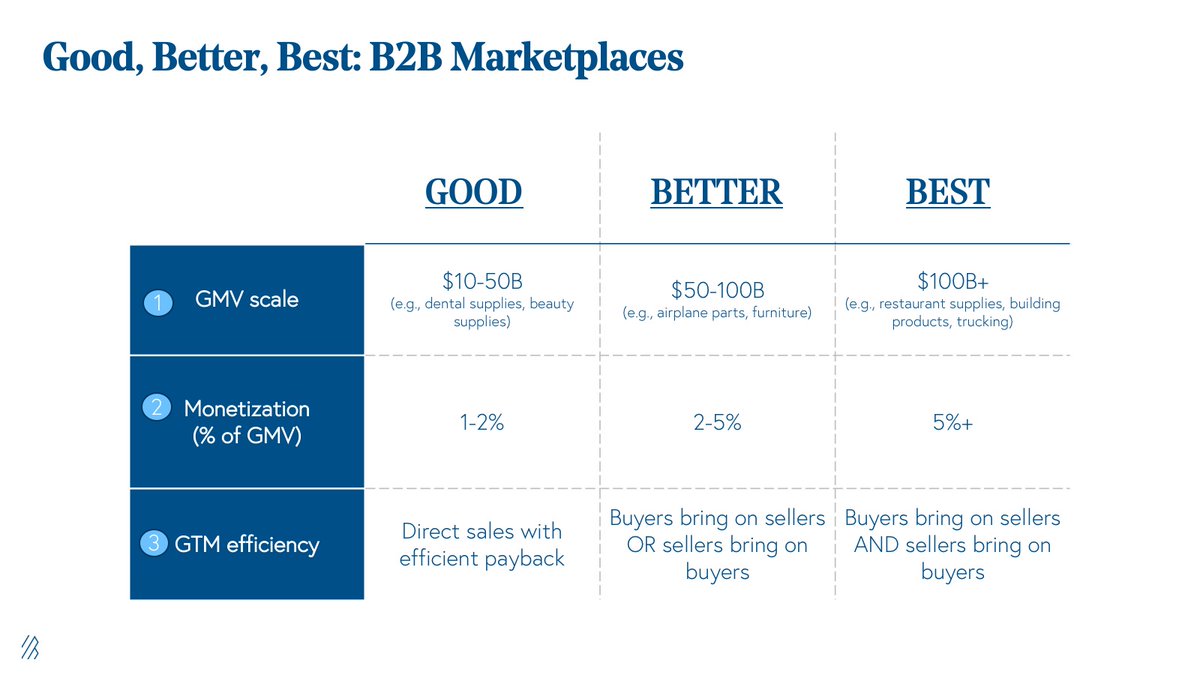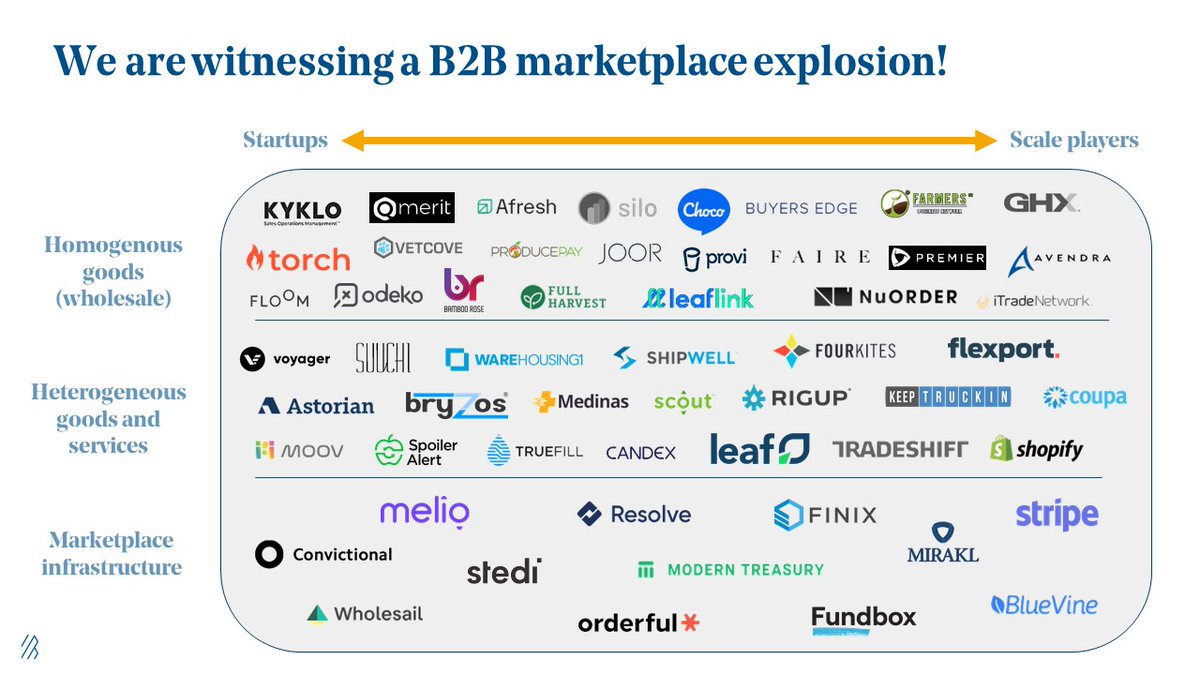B2B marketplaces 1.0 didn't really work. Most B2B spend remains offline. Why?
- horizontal, didn't address vertical specific workflows.
- lacked integrated payments & lending
- digitized existing relationships vs facilitating new ones
Thread 👇
- Generational shift: Millennials have higher expectations.
- Integrated payments & lending
- API-driven architecture enables B2B marketplaces to build real-time multi-vendor product catalogs with accurate SKU and pricing information
- No friction to purchase, so either free/freemium/cheap, and no lengthy on-boarding & integration
- Vertical-specific
- Don't threaten intermediaries too much, at least in the beginning
- Instill trust & facilitate new buyer/seller relationships
- Custom manufacturing ($1T)
- Freight ($1T)
- Energy ($1T)
- Auto parts ($800B)
- Trucking ($700B)
- Grocery ($800B)
- Home appliances ($500B)
- Agriculture ($250B)
- Apparel ($150B)
- Investment banking ($150B)
- Enable price & vendor comparison & streamline offline ordering
- Most offer a core workflow product for free & monetize by selling ads or data, facilitating payments/lending, or by leveraging scale to negotiate volume discounts from suppliers
- SKUs are less standard and comparable across vendors.
- Examples include investment banking, bulk commodities, freight, and logistics.
- Highly managed marketplaces to ensure quality customer experience.
- Can charge high direct transaction fees.
bvp.com/atlas/b2b-mark…





